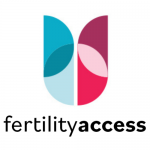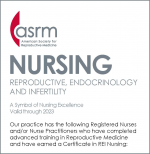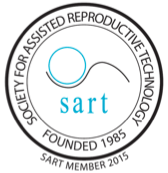IVF is performed throughout the world, helping women and couples start or expand families. Not all IVF providers are equal; experience counts. At CRM, our impressive success rates have made us the premier provider of IVF in the Twin Cities and throughout Minnesota.
What Is IVF?
IVF was the first procedure used to fertilize eggs outside a woman’s body. In 1978, the first “test tube baby,” was conceived through IVF. Most assisted reproductive technologies (ART) are derived from the IVF procedure.
What IVF Is Not
Unfortunately, there are many myths surrounding IVF. We debunk some of the most common IVF myths here.
Please Note: Due to potential complications with anesthesia, the Center for Reproductive Medicine does not offer IVF on patients with a BMI that is greater than 37.
Follicle Stimulation and Monitoring
The same hormones that stimulate one egg to be produced each cycle are given to the woman in higher doses to produce multiple eggs in the ovary. These medications are given at home by the woman herself, much the same way a diabetic gives herself insulin injections.
During this stimulation process which takes about 10 days, the woman is seen in the office 4-5 times for vaginal ultrasound assessment of follicle (egg) growth and blood estrogen determination. These visits tell the doctor how many eggs are being stimulated and when they are ready to be retrieved. A minimum number of follicles must develop to make the retrieval worthwhile. Cancellation or postponement of the cycle may occur if there are too few or too many follicles noted on ultrasound.
Oocyte (Egg) Retrieval
Egg retrieval is performed while the woman is asleep under sedation provided by Nurse Anesthetists. The doctor inserts a needle through the vagina into the ovaries and into each follicle using ultrasound guidance. The follicle fluid containing the egg from the follicle is aspirated into test tubes and given to the embryologist for identification. Each egg is then placed in an incubator where it will be placed with sperm a few hours after the retrieval. The number of eggs retrieved can range from 0 (rarely) to 30 (rarely) depending on the age of the woman and her ovarian sensitivity.
The egg retrieval takes approximately 20 minutes, and the woman then recovers in the recovery room until she is ready to return home for a day of rest on the day of egg retrieval.
Fertilization and Incubation
The eggs and sperm are mixed in the laboratory to allow fertilization. In cases of male infertility, the embryologist can inject a single sperm directly into an egg – this technique is called Intracytoplasmic Sperm Injection (ICSI) – and is used in cases of low sperm counts or when our pre IVF sperm testing suggests a high chance of poor spontaneous fertilization. On average, 70 per cent of mature eggs will fertilize. The embryos will be placed in an incubator where their growth will be monitored.
For women who are under age 40, our goal is to determine the two embryos most likely to result in a pregnancy. Sometimes we can tell which embryos to transfer on day 3 after retrieval (cleavage stage transfer), and sometimes we watch the embryos until day 6 after transfer (blastocyst stage). For women under age 35 a single embryo transfer can be considered, depending on the number of embryos available and the couple’s feelings about the risk of twins.
Embryo Transfer Procedure
The embryos are transferred to the uterus through a soft catheter passed through the cervix. The procedure resembles a PAP smear, except that we ask the patient to have a full bladder so that an abdominal ultrasound can guide the placement of the embryos optimally. After a short stay in the clinic, the woman is driven home for two days of “couch rest” to allow the embryos to implant in the uterus.
The physician will prescribe Progesterone administered by intramuscular injection nightly until the pregnancy test is obtained two weeks after the egg retrieval. If the cycle was successful, intramuscular Progesterone will continue for at least another month.
Cryopreservation
If there are more embryos available after the transfer that have reached the blastocyst stage, the couple may freeze these embryos for future use at a later date, depending on the results of the “fresh” cycle or if they wish future children after a successful IVF cycle.
Transfer of Cryopreserved Embryos
This procedure uses embryos that were saved from a previous IVF cycle and frozen. The embryos are thawed and transferred into the uterus after a specialized protocol which prepares the lining of the uterus for implantation. It is simpler and less expensive than a “fresh” IVF cycle since no stimulation and egg retrieval are required.
Gestational Carrier
There are some situations where a woman does not have a functional uterus, but has normal ovaries and eggs. In this case IVF can be performed on the woman with normal ovaries, but the embryos would be transferred into a “gestational surrogate” or a woman with a normal uterus who would then carry the pregnancy for the woman who supplied the eggs. Following the pregnancy and delivery the child would belong to the male and female sperm and egg producers, respectively. Legal counsel from attorneys who specialize in family law is recommended in these cases.





